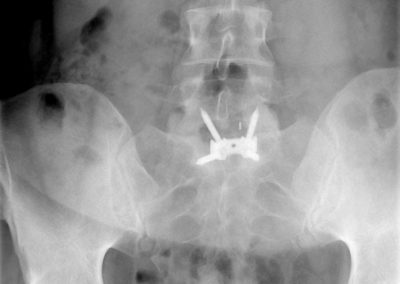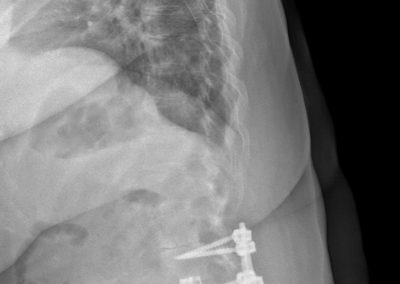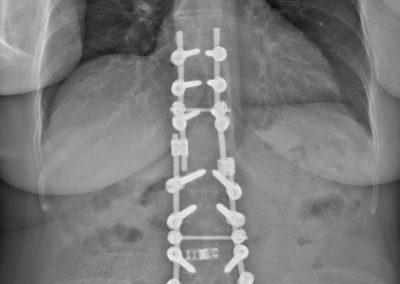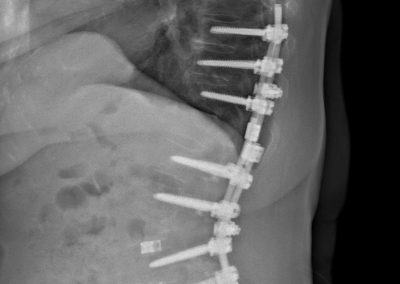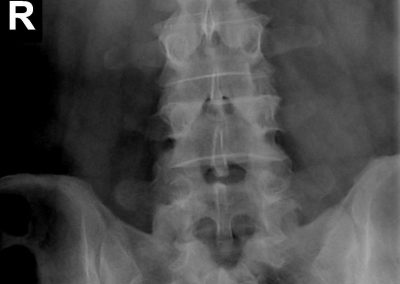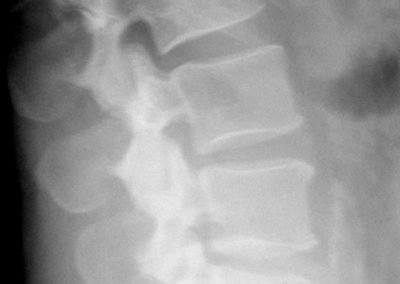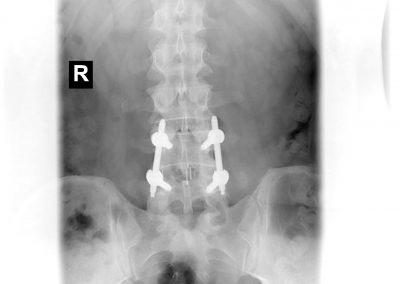Spondylodesis
Fusion surgery
Definition of the Spondylodesis
Fusion surgery is indicated for deformities such as slipped vertebra or scoliosis, congenital malformations, fractures, infections, tumours and severe degenerative changes.
Open spinal fusion surgery
Open spinal fusion is conducted by completely exposing and then fusing the spinal segments, correcting and stabilizing slipped vertebral segments or scoliosis.
Depending on the severity of the case, a dorsal, lateral, ventral approach or a combination of the aforementioned approaches to the spine may be indicated.
Fusion surgery diminishes pain that restricted movement, allowing for greater mobility and flexibility of the spine, even though spinal segments are fused.
Minimal invasive surgery
Minimal invasive fusion surgery is a modern surgical technique where spinal segments are fused with small tissue incisions.
Minimal invasive fusion surgery is indicated in less severe cases of slipped vertebral segments, low back pain due to degenerative disc diseases or simple fractures.
Advantages of the minimal invasive spinal fusion
Contrary to open spinal fusion, where the complete spinal segment has to be exposed, minimal invasive spinal fusion allows a tissue sparing approach to fuse the spine. Consequently, intra-operative blood loss and tissue damage is markedly reduced and a more comfortable post-operative course is achieved.
Post-operative care
Depending on the surgery’s complexity and the general health conditions of patients, the post-operative course varies.
Patients will be treated with physiotherapy during their hospital stay, which can last up to 12 days, to ensure their ability to walk without crutches and climb stairs.
A first post-operative treatment will be scheduled six to eight weeks after surgery.
Patients will be treated with physiotherapy during their hospital stay, which can last up to 12 days, to ensure their ability to walk without crutches and climb stairs.
A first post-operative treatment will be scheduled six to eight weeks after surgery.
Working ability and leisure behaviour
Generally, returning to work is possible after eight to twelve weeks. Daily activities, excluding heavy lifting (more than 10 kg), can be conducted earlier.
